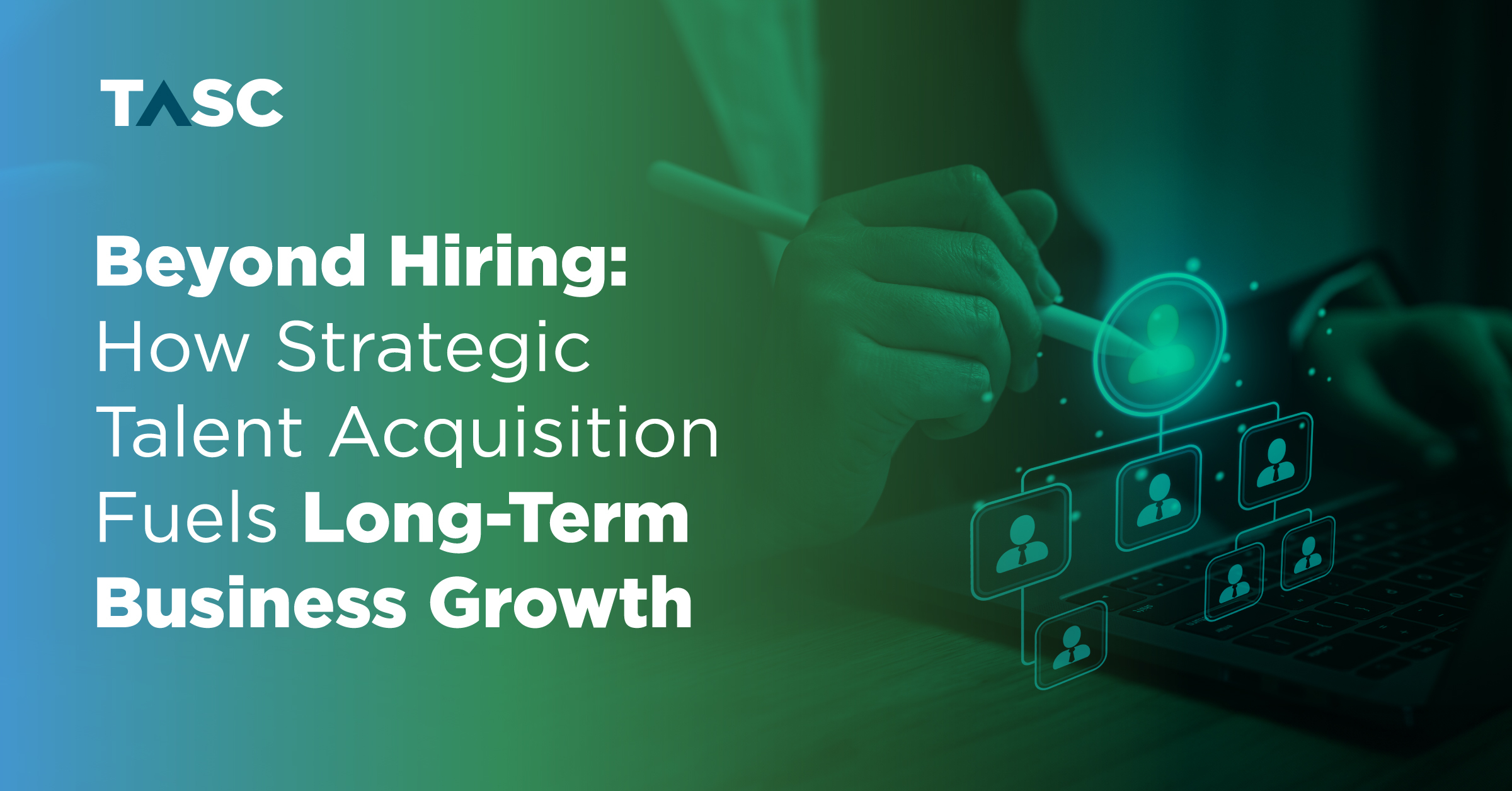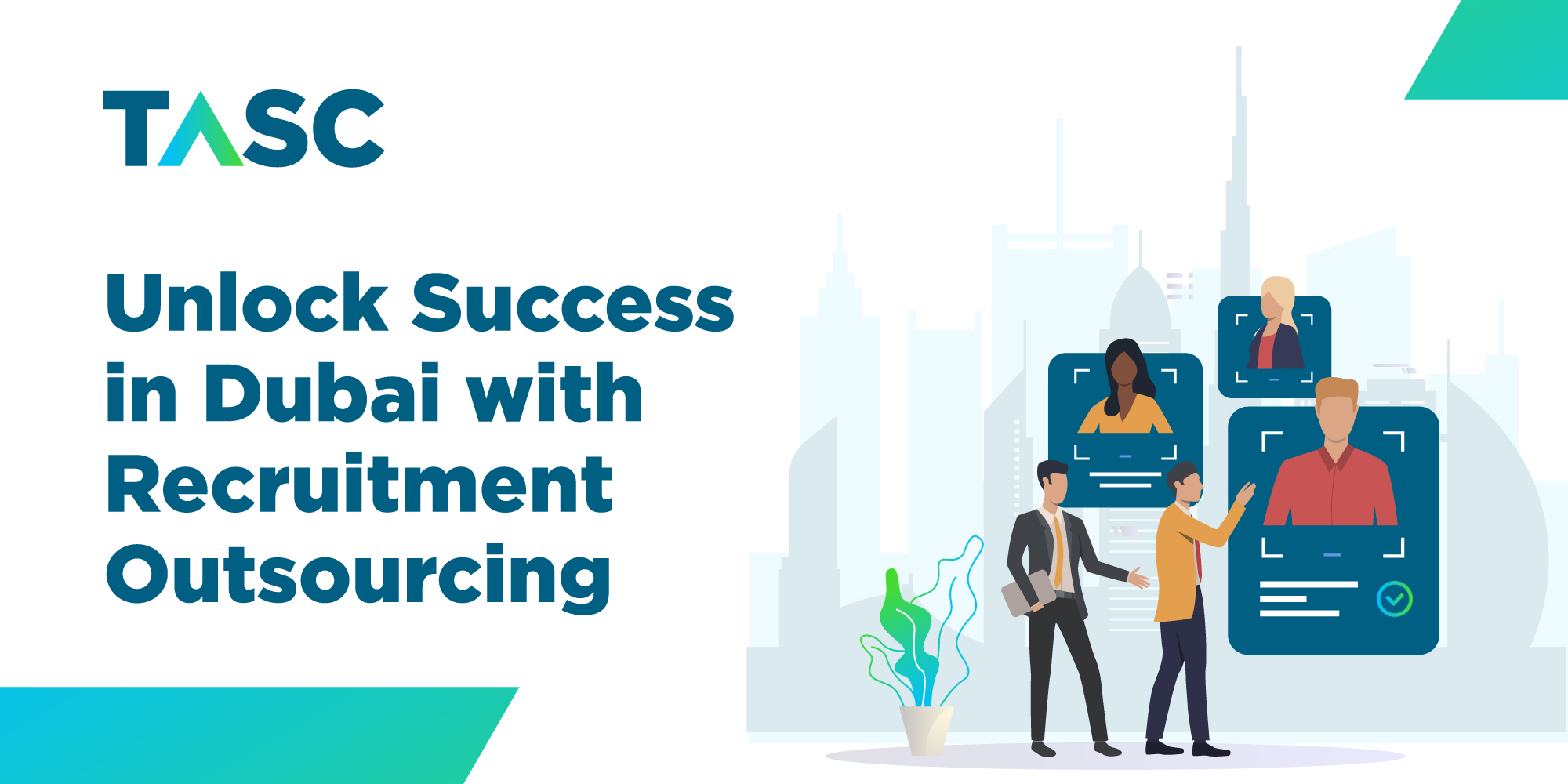Beyond Hiring: How Strategic Talent Acquisition Fuels Long-Term Business Growth
When companies think about talent acquisition, the immediate image that often comes to mind is simply filling open positions. However, the process is far more critical than just hiring people.
Strategic talent acquisition is a powerful lever for shaping the future of a business, driving growth that goes well beyond the immediate need for staff. For businesses in the UAE, where competition for skilled talent is intense and markets continuously evolve, this approach can make the difference between thriving and merely surviving.
So, what exactly does strategic talent acquisition mean, and how can it fuel long-term growth? Let’s explore why thinking beyond the traditional recruitment process is essential for any organization aiming for sustained success.
What Is Strategic Talent Acquisition?
Strategic talent acquisition moves beyond the idea of just finding candidates to fill vacancies. It’s a deliberate and thoughtful approach that aligns the recruitment process with the company’s broader goals and future direction.
Unlike traditional hiring that often reacts to immediate needs, strategic talent acquisition solutions focus on understanding the skills, mindset, and potential that will help the company grow over time. It’s about building a workforce not only equipped to handle today’s challenges but also capable of adapting and innovating for tomorrow.
Key components include:
- Deep collaboration with leadership to understand long-term business plans
- Anticipating future skill requirements
- Creating talent pools and pipelines for ongoing recruitment needs
- Using data to make informed hiring decisions
This approach ensures that every hire moves the business closer to its vision.
The Role of Talent Acquisition in Shaping Company Culture
The people a company hires shape its culture in profound ways. Strategic talent acquisition is essential for building and maintaining a positive, productive organizational culture.
When recruiters focus on cultural fit—not just qualifications—they help create teams that work well together and share core values. This is particularly relevant in a multicultural environment like the UAE, where diverse teams contribute to innovation and resilience.
Diversity and inclusion play a critical role here. A strategic approach ensures that hiring practices promote diversity in backgrounds, perspectives, and experiences, which in turn drives creativity and problem-solving. Over time, this inclusive culture becomes a strong asset, helping the business attract and retain top talent.
Building a Talent Pipeline for Future Needs
Waiting until a position opens to start recruiting often leads to rushed decisions and compromises in quality. Instead, building a talent pipeline—a pool of qualified candidates ready when needed—is a hallmark of strategic talent acquisition.
This proactive approach involves continuous sourcing and relationship-building with potential candidates, even when there are no immediate openings. For example, networking events, social media engagement, and maintaining connections with past applicants can create a steady flow of talent.
Having a talent pipeline reduces time-to-hire, which is crucial for maintaining productivity and minimizing disruption. It also means the company can be more selective, choosing candidates who are the best fit for both the role and the company’s long-term strategy.
Enhancing Employer Brand Through Talent Acquisition
How a company is perceived by potential candidates has a direct impact on the quality of talent it attracts. That’s why talent acquisition in 2025 puts a lot of weight on employer branding.
Employer branding is about communicating what makes a company a great place to work. This could be its values, career development opportunities, or work-life balance policies. When done well, it turns recruitment into a marketing exercise that draws in top candidates who identify with the company’s mission and culture.
In the UAE’s competitive job market, a strong employer brand helps companies stand out. It also builds goodwill that benefits the company beyond recruitment—improving customer trust and partner relations, all of which contribute to business growth.
Leveraging Data and Technology in Talent Acquisition
Data and technology are transforming talent acquisition from a gut-feeling process to a data-driven strategy.
Analytics can reveal patterns in hiring success, candidate behavior, and workforce trends. For example, analyzing which recruitment channels yield the best hires can help optimize budget and effort. Similarly, tracking employee performance linked back to recruitment sources can guide future strategies.
Artificial intelligence (AI) and automation also streamline tasks like candidate screening and interview scheduling, freeing recruiters to focus on relationship-building and strategy. Predictive analytics can forecast hiring needs based on business growth projections, ensuring the talent acquisition function stays one step ahead.
By integrating these tools, companies can improve the quality of hires, speed up recruitment, and align hiring closely with growth objectives.
Aligning Talent Acquisition with Business Strategy
At its core, strategic talent acquisition is about making hiring a key part of business planning. Instead of treating recruitment as a standalone function, it is integrated with company strategy.
This means understanding the skills and capabilities needed not just today but for future projects and innovations. For instance, if a company plans to expand into new markets or adopt new technologies, talent acquisition should prioritize candidates with relevant expertise or potential to grow in those areas.
When recruitment aligns with business goals, it becomes a competitive advantage. The company builds a workforce prepared to meet challenges and seize opportunities, rather than reacting to market changes after the fact.
Fostering Employee Retention and Development from the Start
Strategic talent acquisition also influences retention and development, critical factors in long-term growth.
Hiring candidates who fit the company culture and share its vision increases the likelihood they will stay and grow with the company. Early integration programs, mentorship, and training fall under the best retention strategies as they help new hires feel valued and prepared.
This approach leads to higher engagement and reduces costly turnover. It also creates a pool of internal talent ready to step into leadership roles or adapt to new business needs, supporting sustained success.
Overcoming Challenges in Strategic Talent Acquisition
While the benefits are clear, companies may face challenges when implementing a strategic approach, which is often the reason they resort to outsourcing a talent acquisition company.
Common obstacles include difficulty in forecasting future talent needs, resistance to change from traditional hiring teams, and balancing immediate recruitment pressures with long-term planning.
Solutions involve building stronger collaboration between HR, leadership, and other departments; investing in tools and training; and maintaining flexibility to adjust strategies as the business evolves.
Continuous assessment and improvement ensure the talent acquisition function remains aligned with business goals.
Wrapping Up
Strategic talent acquisition goes well beyond filling vacancies. It is an essential driver of long-term business growth, shaping culture, building talent pipelines, enhancing employer brand, and integrating recruitment with business strategy. For companies in the UAE and beyond, investing in this approach creates a foundation for sustainable success.
By focusing on the future and aligning talent decisions with business objectives, organizations position themselves to attract, develop, and retain the right people—those who will help them adapt, innovate, and grow over time.
If growth matters, the way you acquire talent should too.




.jpg)
